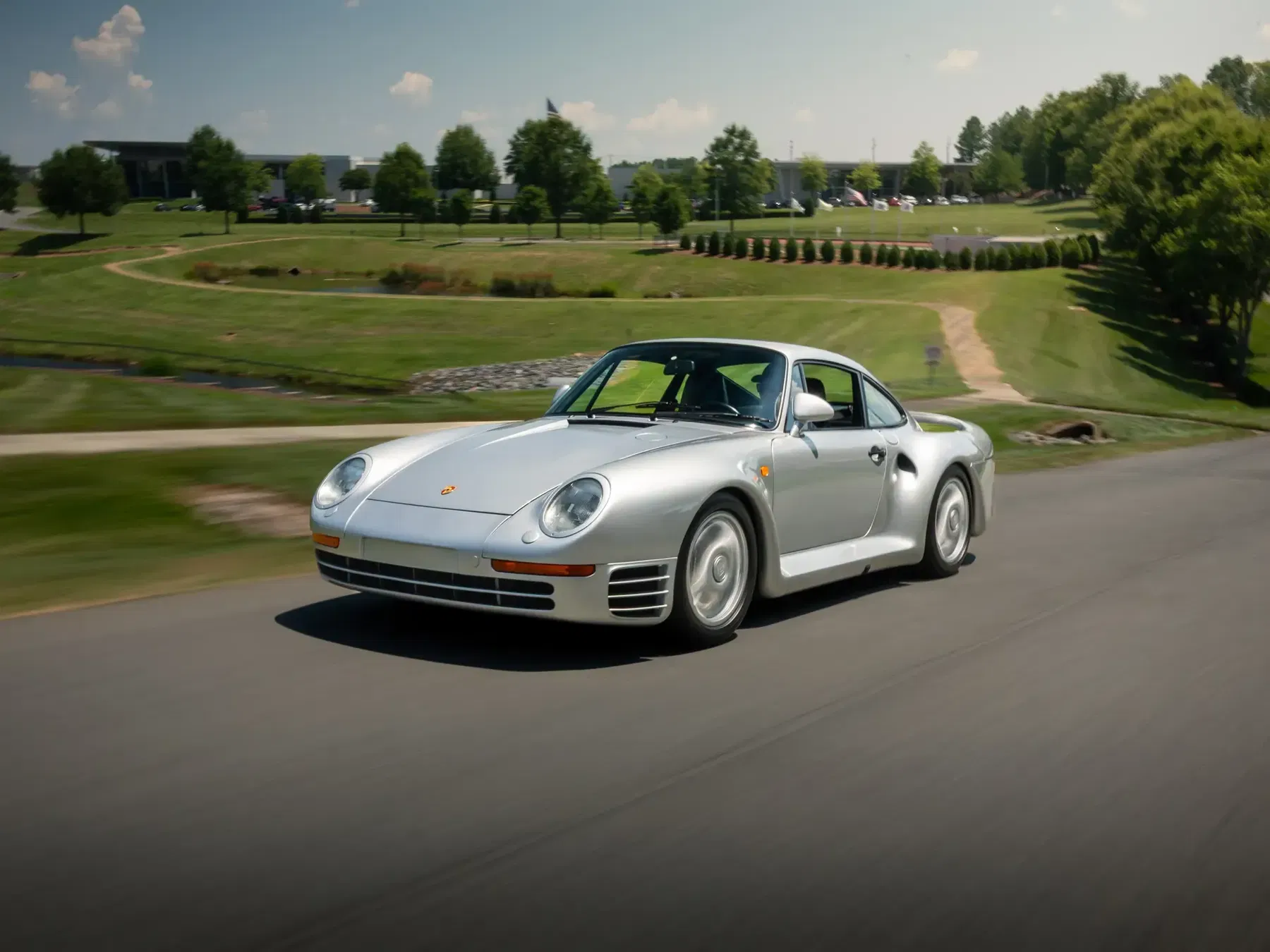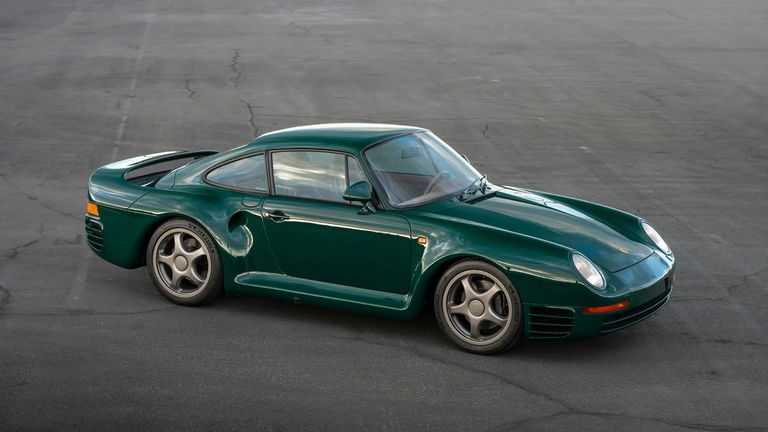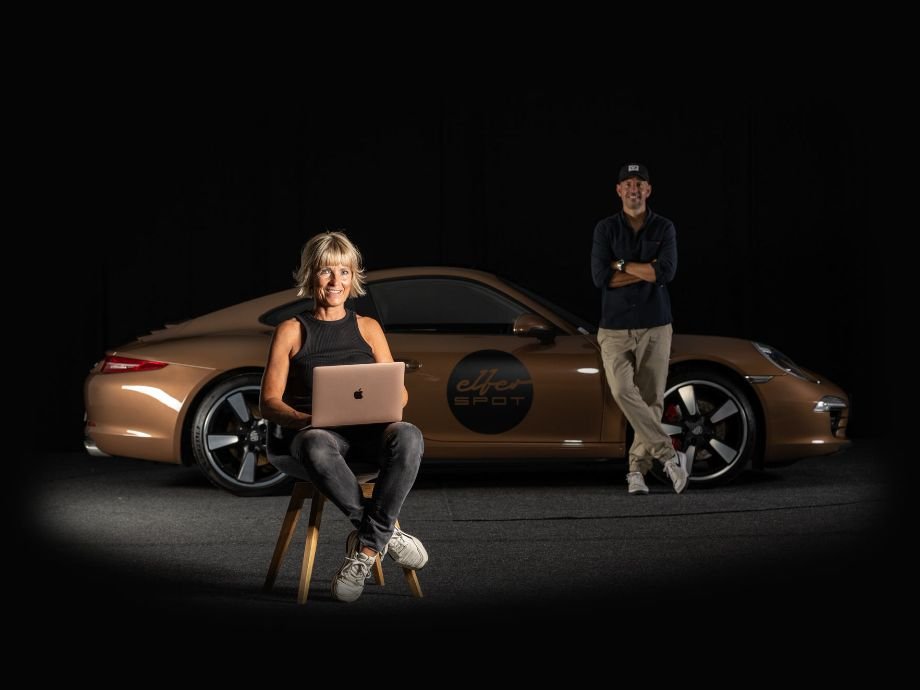To satisfy the infamous Group B race and rally ruleset introduced in 1982, manufacturers seeking to take part had to build 200 roadgoing versions of their respective competition cars. In Stuttgart, the result was a production run of 292 examples of its pioneering new Porsche 959.
At the heart of the powertrain sat a 2.85-liter flat-six with water-cooled heads, which was related to the engine design found in the dominant 956 and 962 Group C sports cars. The motor was then enhanced by the first application of sequential twin-turbocharging in a road car to develop 444 horsepower. This was delivered through a six-speed manual transmission and four-wheel drive, enabling the technical triumph to sprint to 62 mph in just 3.7 seconds before climbing to a top speed of 197 mph. Automatically adjusting ride height optimized the aerodynamic profile of the car, while the tires surrounding the hollow magnesium wheels were checked by an onboard pressure-monitoring system.
Given the immense complexity, Porsche asked $225,000 for the 959 when new. But even at that price, it is believed that the cost to build each car exceeded $450,000. All told, alongside the more pared-back Ferrari F40, the 959 is rightly regarded as one of the landmark automotive creations to emerge from the 1980s.
The 959 “Komfort” offered here holds a 5 April 1988 date of production. Delivered new to France on 13 April, this example was originally specified with Silver Metallic paintwork over a cabin trimmed with Interior-To-Sample (code 99) Black leather and was further configured with an optional alarm system plus heated and electrically adjustable sports seats.
While its early history in Europe is not definitively known, the Porsche was imported to the United States in May 2002. Destined for famed 959 specialist Canepa Design in Scotts Valley, California, this car is understood to have gained the company’s “Stage One” treatment. The fitment of a brace of Garrett AiResearch turbochargers, uprated wastegates, new engine management and ignition systems, a revised fuel system, and a stainless-steel exhaust resulted in the output of the flat-six increasing to circa 600 horsepower. The Porsche was further enhanced by the installation of coil-over suspension reminiscent of the 20 examples of the 959 “Sport” model built, thus replacing the sometimes-temperamental hydraulic set-up originally equipped.
Gaining a California Certificate of Conformance in 2007, allowing the car to be deemed smog-legal, the 959 was issued with a state title in July of the following year. The Porsche remained on the West Coast through to 2020, lately as part of an esteemed collection. Next recorded as having been purchased in Michigan, the consignor acquired the car in January 2024.
Presented in its factory color combination and significantly retaining its matching-numbers engine, this 959 “Komfort” further boasts a significant power boost. It is also accompanied by a copy of its Certificate of Authenticity from Porsche, two binders of technical photographs compiled by Canepa Design, a highly desirable multi-piece tool kit, jack, and a warning triangle contained in bags that match the interior upholstery. The odometer displayed 14,702 miles at the time of cataloguing.
An example of Porsche’s landmark flagship supercar for the 1980s, this 959 “Komfort” represents a major part of automotive history, will stun crowds at any number of displays and events, and would be a statement-making addition to any discerning collection.












































































































